It’s Stress Awareness Month, an event that’s been held every April since 1992 to highlight this modern-day epidemic.
Its aim is to provide a safe space to have an open conversation about the impact of stress with friends, families, and colleagues while removing the stigma around the effect it can have on our mental health.
Stress in the workplace is particularly prevalent, particularly as people navigate the cost-of-living crisis and resulting economic uncertainty.
In fact, a survey by employee wellbeing support platform Champion Health highlighted four key statistics relating to employee stress:
-
76% of employees report moderate-to-high or high levels of stress
-
33% report that high levels of stress impact productivity
-
The top cause of work-related stress is workload (73%)
-
54% agree that the perfect amount of stress enables them to thrive
In addition to this, the National Institute for Health and Care Excellence found that some 13.7m working days are lost each year in the UK because of work-related stress, anxiety, and depression, costing £28.3bn yearly.
Meanwhile, according to YouGov and the Mental Health Foundation, 60% of 18-24 year olds and 41% of 25 to 34-year-olds feel pressured to succeed, versus just 17% of 45 to 54-year-olds and 6% of over 55s.
Leading HR and payroll solutions provider CIPHR also reported that almost one-quarter (23%) of adults say that work causes them stress.
With such stark results in place, it comes as little wonder that more must be done to tackle and eliminate work-related stress.
This is because it poses a risk to businesses and can result in higher sickness absence, more errors, lower staff engagement, reduced productivity, and a devalued company culture.
Here, we provide some top tips for employers to ensure that their workplace is as stress-free as possible…
Create a good work-life balance
Over time, one of the leading causes of workplace stress has been the inability to achieve a healthy work-life balance. Work anxieties tend to follow employees back to their home, which disrupts their opportunity to unwind, recharge and spend time with loved ones. This leads to a negative cycle of stress that will only continue to grow as the months pass. A positive work-life balance needs to minimise work-related stress as a means of creating a sustainable professional life, while optimising health and wellbeing.
Some ways to achieve a healthy work-life balance include ensuring employees adhere to traditional working hours, avoiding emails or calls after they have left the office and providing adequate amounts of time for tasks to be completed. These boundaries reduce the pressure for employees to work an extended workday and diminish the rate of burnout and subsequent absenteeism. Unless there is a time sensitive emergency, make sure employees only send emails, messages and make work-related phone calls within the stipulated working hours.
Provide good employee benefits
One of the most impactful ways to reduce an employee’s workplace stress is to take care of them by providing access to strong mental and physical health benefits, alongside other more non-traditional options. Providing coverage can help to combat the negative consequences of stress and reassure employees that, should the unexpected occur, they would be covered. The safety net of strong benefits can help decrease stress within a workplace while improving overall employee experience, satisfaction, and productivity.
Access to benefits can extend beyond healthcare, to gym memberships and therapy sessions. Other less conventional benefits that may help to improve employee wellbeing include paying for TV and meal kit subscriptions, offering healthy office snacks, and providing fitness trackers.
Encourage better communication
Unfortunately, a lot of workplace stress may filter through from more senior roles. When employees don’t feel comfortable communicating with management teams, they tend to feel more pressure while in the office. As an employer, you have the power to shape the employee experience and reduce stress caused by leadership issues.
There are training classes and workshops that can help managers develop more effective communication methods and stronger delivery when providing constructive criticism. Making it clear to your workforce that the line of communication between managers and employees is always open can help to ensure that stressful situations don’t escalate more than they need to.
Arrange team outings
We’re all in agreement that nobody likes the notion of ‘forced fun’, but spending time with colleagues outside of the working environment can help to improve morale, pave the way for more smooth interactions and facilitate stronger team building and cooperation.
These outings should be conducted during normal business hours to avoid cutting into your employees’ personal time. Some options could be happy hour at a nearby bar or group volunteering when a weekly meeting might ordinarily be taking place to take people away from the normal working routine and any associated stresses.
Offer flexible working
Flexible work schedules give employees the opportunity to vary their start and end times for their workday to allow for personal commitments, such as childcare. This has shown to be an effective way of lowering workplace stress and increasing productivity. While flexible schedules may not work for all employees in all roles, it’s something to consider and it shows that you trust them to do their jobs well and in a timely manner, without having to micromanage.
If work isn’t time sensitive or dependent on typical business hours, give your employees options throughout the week to accommodate their needs and help reduce overall stress. Also think about allowing your employees to work remotely and give flexibility for start and end times.
Prioritise employee recognition
Your team works hard to advance your organisational and commercial goals, so when you take the time to recognise their achievements and hard work, this shows that you value them. This can help alleviate stress, as recognition acts as a positive reinforcement that someone is doing a good job. This recognition doesn’t have to be an expensive prize. Even a verbal thank you in person or a company-wide email from a manager can achieve positive results by lessening stress and boosting engagement.
Encourage regular breaks
When deadlines loom, it’s now the norm for employees to grab lunch at their desks, without taking a pause from their screens. However, taking breaks can help employees avoid burnout while reducing overall stress levels. This is why it’s important to stand up and move around. Try to encourage your employees to take breaks throughout the day by offering on-site facilities, exercise classes, meditation areas and breakout spaces.
Make the office fun and inviting
A great way to encourage breaks throughout the day is to make your office fun. By using diversions throughout the building, you provide employees with creative ways to get up and move without having to leave the building. Some options include adding a ping pong table, allowing employees to bring their pets to the office or even installing a few video games. While these diversions can seem counterintuitive at first, when used appropriately, they can transform the employee experience and help breed innovative ideas.
If you would like to discuss this, or any of the topics covered in our articles, please get in touch.







